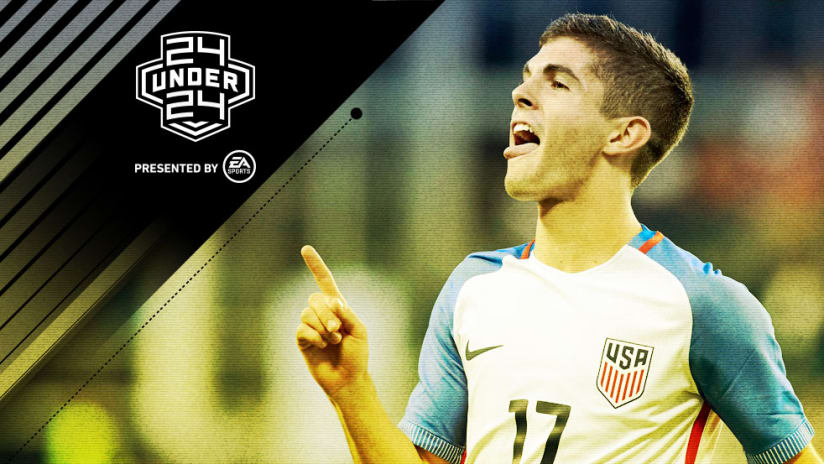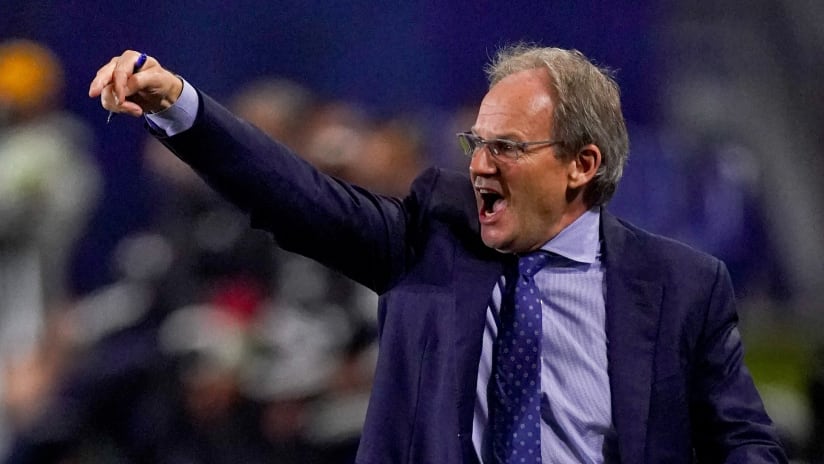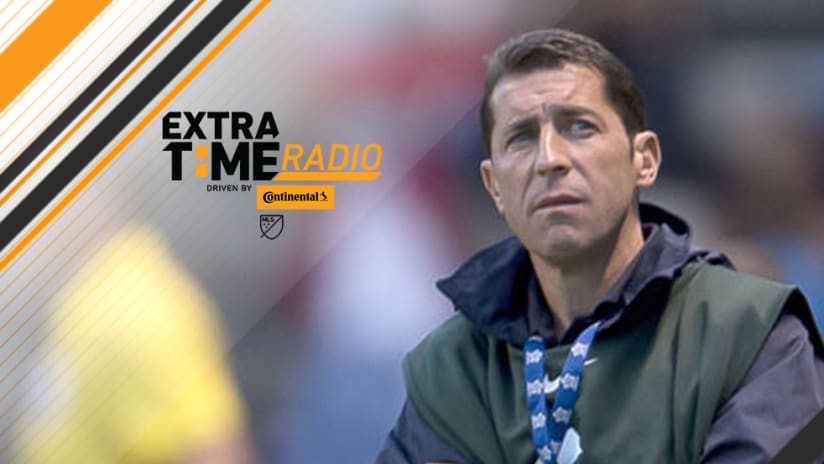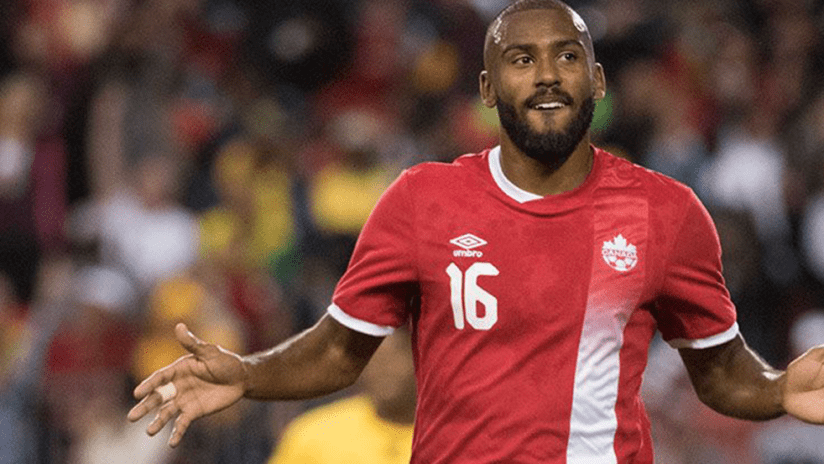You could always tell by the rising throb of crowd noise that he had the ball at his feet, time slowing and collapsing all around him until he was all you saw. Each time the diminutive teenager stood over the ball, onlookers gripped the fencing around the field and crowded in among each other, whispers turning to murmurs turning to barely muted shouts.
Sometimes nothing happened at all, a backward pass or a squared ball or even lost possession. But sometimes there was magic, crackling and alive and demanding attention. Once he danced around a would-be tackler, leaving him prone on the sideline. On another occasion, he ripped through two England defenders with a nutmeg that left the braying crowd breathless.
Whether anyone knew it that warm December night or not, Christian Pulisic had already arrived.
By the end of the match, Pulisic had either directly or indirectly been involved in nearly every meaningful action in the US Under-17 men’s national team’s 5-1 blasting of England at the Nike International Friendlies in Bradenton, Florida. A few days later, the U.S. defeated Brazil 4-1 to win the entire tournament.
The year was 2013. Pulisic had just turned 15, and he was still a relative unknown on the international scene. One tournament changed that, and less than a year later he’d moved with his father to Dortmund to begin a career that’s already taken him to World Cup qualifying matches and the UEFA Champions League.
Nobody that night could’ve predicted any of this – the US senior team goals before his 18th birthday, the Bundesliga minutes, the multi-million dollar Premier League transfer offers – but there was something different about it. Pulisic had technical abilities you so rarely see at his age: a razor-sharp soccer IQ without so much traditional athletic skill, a lightning quick trigger on ball, a storm spotter’s vision, unreal close quarters control, preternatural comfort in one-on-one situations.
These were enough to arrest the attention of the American public on their own. But they’ve been doubly extraordinary because of their rarity. Put simply, we don’t get many of Pulisic’s archetype filtering through American soccer’s youth machinery.
The broader question – and one academy coaches from the Pacific to the Gulf of Mexico to the Atlantic are feverishly trying to answer – is why not.
"He's a perfect storm," former US and D.C United midfielder and current D.C. United head coach Ben Olsen told PennLive.com earlier this year. "And it's going to have to be perfect.
"Why we don't have more perfect storms, I don't know. Because there's enough dads that have played soccer, there's enough. That's what's mind-blowing in this whole thing is that we're not producing more kids like him that are at least knocking on the door of some of these big teams."
If you pull back the lens and look at it globally, most of the world’s most gifted technicians developed that part of their game out of necessity due to an athletic deficiency somewhere else. That was Pulisic’s story, anyway, and too often those smaller players are washed out of the game by the more athletically inclined at an early age.
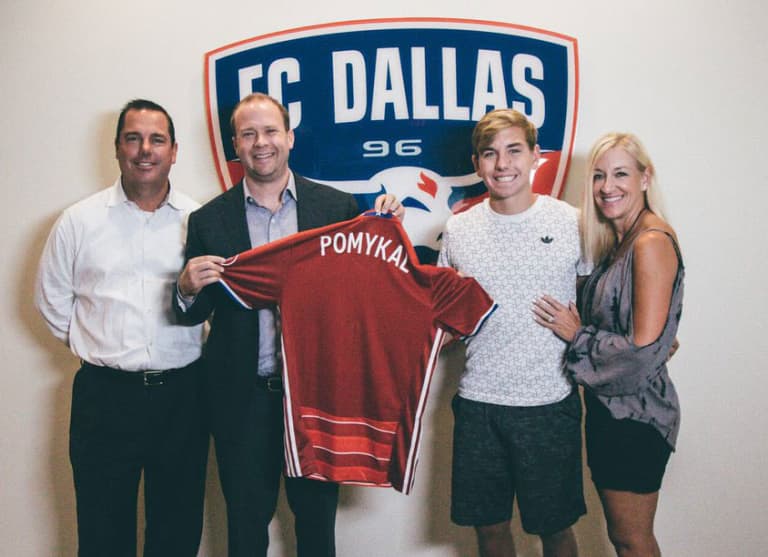
Some academies do this better than others, this development of Lilliputian attackers. But as the awareness of the game’s finer principles has grown here, so too has the push to identify and develop skill players at an early age. Few in North America do it better than FC Dallas, which just signed 16-year-old attacking midfielder Paxton Pomykal to a Homegrown deal after seeing Weston McKinnie head overseas to Schalke and Alejandro Zendejas sold to Chivas Guadalajara.
Same for Toronto FC, who are currently in the process of developing a young creative whirlwind named Ayo Akinola.
At just 5-foot-7, Akinola was born in Canada but chose to exercise his eligibility for the US, where he currently stars as a key contributor in the current U-17 cycle as the team gears up for next year’s U-17 World Cup.
Akinola has always been among the smallest players on the field, so the TFC staff had to approach his development differently. And that goes double for every other young player who flashes technical acumen from an early age.
“It was important for us to stress with Ayo the way he was taught at a young age and process information and recognize cues and play the game more with his mind than with his feet,” says Anthony Capotosto, the technical administrator for the TFC academy. “And as he starts to get older, that mental aspect of the game and that tactical acumen and understanding the game at a higher level becomes more important than what he’s actually able to do with the ball at his feet.”
This line of thinking represents a radical departure from the decades-long held dogma at the deepest youth levels in North Ameria that technical ability was won almost exclusively through sweat-drenched practices running grapevine drills over ladders and time spent working through numbing passing routines. Those things have their place in the end, but thanks to the aid of more advanced coaching education and the rapid march of soccer’s globalization, youth coaches of every stripe are quickly learning that what happens between the ears is far more important than what happens at their feet.
Because in the end, the latter is fed by the former. In a lot of cases in the past we had that development equation reversed.
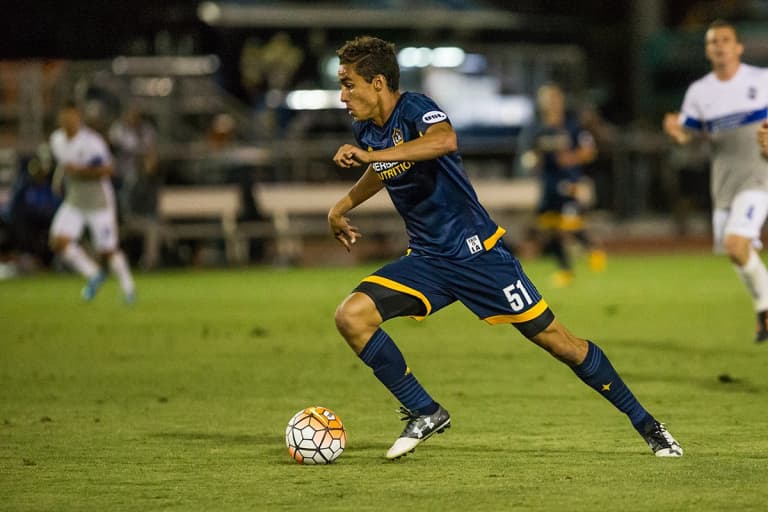
The issue of skill vs. athleticism isn’t often as adversarial as it sounds. Or at least it doesn’t have to be. Mike Muñoz is the head coach of the LA Galaxy U-18 team, which sees some of the brightest skill players in Southern California filter through its ranks every year. Just this year the team’s management poached U-18 attacking stud Ethan Zubak, pictured above, for LA Galaxy II in the USL.
Muñoz sees it at least partly as an issue of proper identification. Too often players are allowed to languish in positions where their skill sets aren’t best served. Sometimes that means rock-footed athletes aren’t moved back from the midfield to defense fast enough, or, more to the point, that diminutive skill players aren’t protected and allowed to flourish in the right systems.
So by the time they’ve reached the older academy ages, it’s already too late. They’ve lost the ability to achieve mastery, thus stymying the opportunity to gain vital minutes they need at higher levels.
“It’s really about identifying the player’s strengths, what he’s good at and what can make him a successful professional soccer player and just continuing to work on that craft,” says Muñoz. “So if this guy is going to be a wide midfielder and he has unbelievable pace and all he has to do to be successful is be able to beat guys off the dribble and cross balls into the box, then we’re going to really focus on that kid and make sure he’s the best at that.
“It’s a lot of individual function work and coaching. We’ve gone far, far away from specific team trainings. Now it’s all about focusing on the individual.”
That focus on individual training is ramping up all across the country, an initiative coaches hope will begin to switch the focus from the traditional American concept of the athlete and perhaps to something a bit more global in scope. Because when it comes to fostering young domestic skill players at the highest levels, the US still has ground to cover.
“I think we’re gaining some ground,” says Capotosto. “But I don’t think we’re on par with some other places yet. It’s just not in the culture right now. Things I think in the US and Canada are going to change in the next generation or two. I think it’s just a matter of time.”

